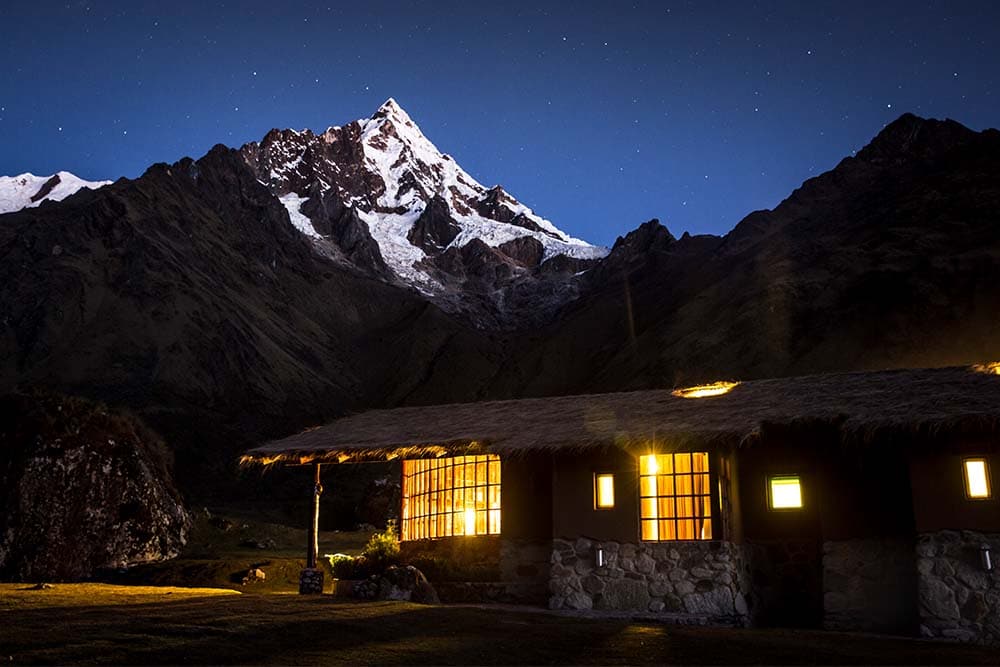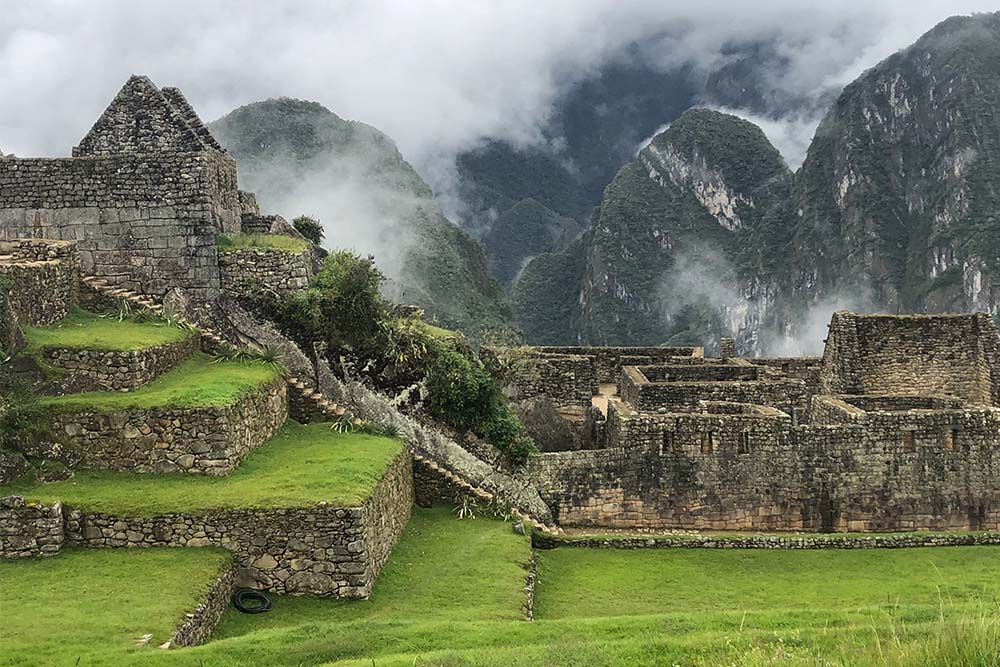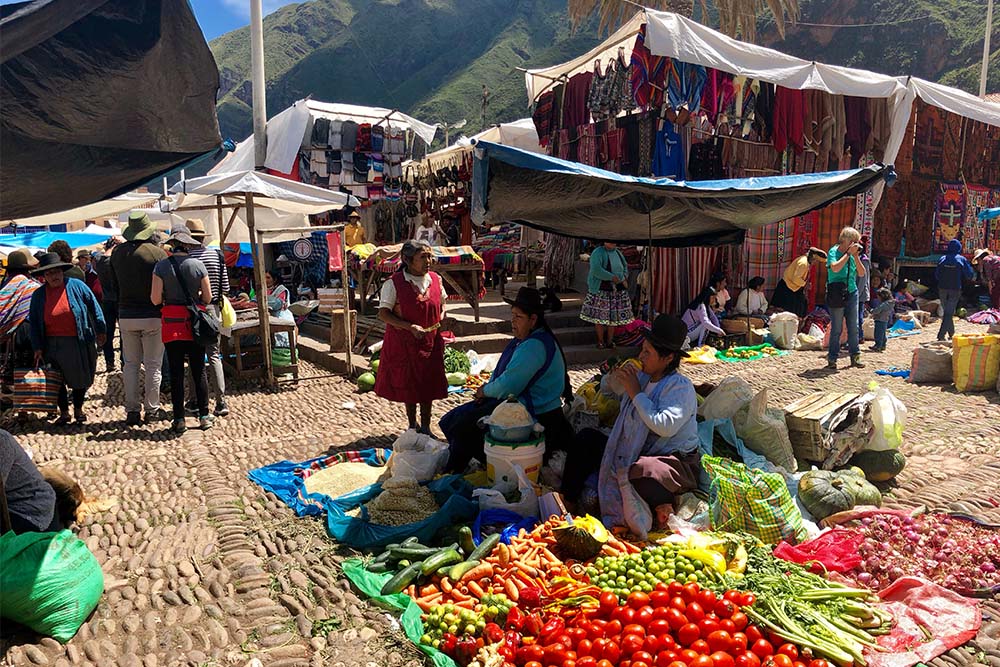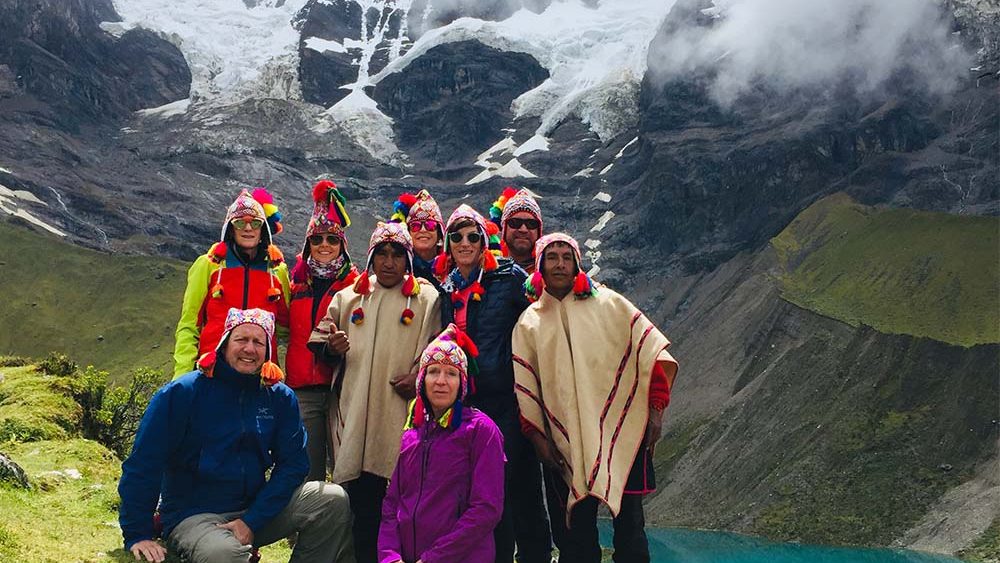Peru is in the same time zone as East Coast America, but within a New York minute of arriving it’s an unmistakably foreign place. Machu Picchu alone is a mysterious Incan masterpiece from 1450. It’s a bucket list travel destination and UNESCO World Heritage Site, but one of many natural and historic wonders throughout the tropical country in South America.
Climate & Topography
Half of Peru is Amazon rainforest, but with 84 of the world’s 103 ecosystems, and 28 of its 32 climates, Peru is very diverse. Peru lives up to its Quechua Indian meaning of abundance. Its northern tip touches the equator, but there’s nothing balmy about the ice-capped, imposing peaks of the mighty Peruvian Andes. With 37 summits above 6,000 meters (19,685 feet), the mountain chain runs parallel to Peru’s 1,500-mile Pacific Ocean coastline.
Cuisine
From lively Lima to Lake Titicaca, 12,500 feet, it’s easy to bite off more than you can chew in Peru. Especially if your trying Cuy, (pronounced Coo-ee), a Peruvian delicacy known elsewhere as Guinea Pig. Doused in garlic and fire-roasted, it’s tasty, but more traditional pollo a la brasa, Peruvian-style roast chicken might be more appealing.
Peru has plenty of choices. Ryder-Walker’s Salkantay Trek trip is a memorable mountain adventure in Peru’s high Andes that includes city visits, scenic hikes, cultural tours and Machu Picchu. Travel on foot through 15 ecosystems from high elevation to the Sacred Valley. Relax nightly at lodges in rugged wilderness, but with zero roughing it: hot tubs, pisco sours, massages and mouth-watering meals fit for an Incan king.
The Destination – Machu Picchu & The Journey – The Salkantay Trek
 The five-night,six-day trekking portion of the trip combines challenging hikes with relaxing accommodations at different Mountain Lodges of Peru (MLP). As you hike from lodge to lodge, a MLP representative joins the group providing local flair, Incan history and regional stories.
The five-night,six-day trekking portion of the trip combines challenging hikes with relaxing accommodations at different Mountain Lodges of Peru (MLP). As you hike from lodge to lodge, a MLP representative joins the group providing local flair, Incan history and regional stories.
Each day’s 5-10-mile hike concludes by mid-afternoon with free time and first-class amenities: hot showers, gourmet meals, goose down bedding, yoga, outdoor Jacuzzis. A 5-mile route along the picturesque ancient Incan road Camino Real arrives you to Salkantay Lodge, 12,690 feet, beneath the snowy summit of the same-named 20,690-foot peak.
At such extreme heights, prepare for a full spectrum of weather. The 5-mile hike to Lake Humantay, 13,845 feet, is another Andean attraction. The moderate route delivers an exceptional alpine experience. Relax by turquoise waters, awestruck by formidable glaciers and craggy summits looming above.
An 8-mile circumnavigation of Mount Humanatay, 17,955 feet, is a highlight. Begin in the Rio Blanco valley crossing otherworldly boulder fields. Ascend the steep, challenging switchbacks to Salkantay Pass, 15,213 feet, the trek’s highest point. Then, descend through misty mountains to the remote Wayra Lodge, 12,812 feet.
The remainder of the trek descends along the Salkantay River into lower-lying bamboo forest. Complete the hike to Colpa Lodge, 9,414 feet, perched on a promontory above the confluence of three rivers. After a final night at Lucma Lodge, beside an avocado orchard, take a 7-mile jaunt through lush jungle over Llactapata Pass, 8,975 feet, with distant views of the backside of Machu Picchu. Onward to the depot and an hour-long train ride to the outback village of Aguas Calientes.
Mountain Towns, Sacred Valleys
The trek to Machu Picchu includes cultural moments at mountain cities and farming villages of the Sacred Valley. Arrive in Cusco, the capital city of the Incan Empire. One of the oldest continuously inhabited cities in the Western Hemisphere, Cusco is brimming with pre-Colombian and Spanish colonial history like the ruins of Sacsayhuaman, the Cathedral Basilica and the legendary Plaza de Armas.
At 11,200 feet, Cusco is wonderful for walking with a charming old town and fine-crafted stone architecture. The San Blas district is famous for fun shops, cobblestoned streets and boutique hotels. Only 50 miles from Machu Picchu (though longer in travel time), Cusco is the perfect place to acclimate.
Thermal Hot Springs
Aguas Calientes, Spanish for “hot water,” has thermal hot springs. Just a half-hour bus ride from Machu Picchu, throngs of visitors arrive daily by rail, bus and trail – on foot or horse. Seek reprieve from the souvenir stalls of the bustling boom town on a 12-acre wooded preserve with rustic-chic whitewashed casitas. Meander along stone paths through terraced hillsides with waterfalls, 200 different species of birds and the world’s largest orchid collection.
Machu Picchu Tour
 In the early morning hours, a lively bus goes up to the Historic Sanctuary of Machu Picchu for a 2-3 hour guided tour. The 15th century estate, constructed for Incan emperor Pachacuti, showcases the ancient civilization’s skillful architecture. The Temple of the Sun, the Watchtower and the royal residences are focal points, plus free time to ponder the mysteries of the long-lost Incans.
In the early morning hours, a lively bus goes up to the Historic Sanctuary of Machu Picchu for a 2-3 hour guided tour. The 15th century estate, constructed for Incan emperor Pachacuti, showcases the ancient civilization’s skillful architecture. The Temple of the Sun, the Watchtower and the royal residences are focal points, plus free time to ponder the mysteries of the long-lost Incans.
Ollantaytambo, on the Urubamba River, was built in the 15th century. It exemplifies Inca city planning with narrow cobblestone streets and irrigation canals. When town empties mid-morning of Machu Picchu-bound tourists, wander the ancient labyrinth of deserted streets. Explore the town’s less-visited Incan ruins, the sole site where the Spanish army was repelled. Then, enjoy a farm-to-table meal at a working organic farm turned inn.
Authentic Food from the Andes
 Peruvian mountain food sources ingredients from farms and ranches from the fertile Sacred Valley. The food is fresh and simple, strongly influenced by the Quechua Indians. Multiple varieties of maize, corn, and potatoes are rooted in the Andes, once staples of the ancient Incas.
Peruvian mountain food sources ingredients from farms and ranches from the fertile Sacred Valley. The food is fresh and simple, strongly influenced by the Quechua Indians. Multiple varieties of maize, corn, and potatoes are rooted in the Andes, once staples of the ancient Incas.
Farm to table is the norm. MLP dinners deliver delicious three-course meals including grilled trucha (lake trout) or Peruvian barbecued meat with quinoa and fava beans paired with a glass of South American red wine. Since lodges are equipped with water filtration systems, MLP guests indulge in Peru’s range of fresh fruits and veggies like tomatoes, cucumber, peppers, apricots, peaches and cherries. MLP breakfast is served buffet-style including breads, cheeses, yogurt, granola, made-to-order, eggs, bacon and pancakes. While hiking, enjoy a mix of picnic-style lunches coupled with lodge or rural restaurant-style affairs.
Cusco Cuisine
Cusco has some of Peru’s best restaurants, chefs, and food markets like the vibrant Mercado San Pedro where diners slurp rich bowls of Caldo de Gallina, a broth-based soup with chunks of chicken, carrots, spices, ginger and noodles. Mate de Coca is a popular, slightly bitter tea that cures headaches, fatigue and alleviates altitude sickness.
Straight-forward and hardy, Lomo Saltado is on every menu. It consists of strips of beef mixed with onions, tomatoes, hot peppers and French fries, served with rice. Strong and citrusy Pisco Sours are the national drink of Peru.
Learn more about our Peru: The Salkantay Trek to Machu Picchu










Comments are closed.